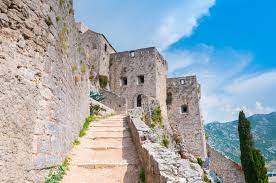Klis Fortress – is it worth visiting?

Klis Fortress, also known as Clisso, is an impressive fortress located in the town of Klis near Split, Croatia. This fortress has existed since the times of the Roman Empire and served as a guard over the pass connecting the Adriatic coast with the interior of the continent. Over the centuries, it passed through various historical periods, being successively under the rule of the Croats, Hungarians, Venetians, Turks, French and Austrians.
The history of the Klis Fortress is rich and turbulent. During the 16th century, it was the site of intense fighting against Turkish invaders. Thanks to the efficient command of Duke Petr Kruzic, the fortress repelled Turkish attacks for 25 years. However, after Kružic’s death in 1537, Klis was occupied by Ottoman troops. In subsequent years, including in 1596, the fortress changed hands several times as a result of fighting between Croats and Turks.
In the 16th century, Klis was one of the most powerful fortresses in the Dalmatian region. After being occupied by the Turks, it was under their control for 111 years, and Jadro became the natural border between the area controlled by Venice and the Turkish Klis. In 1648, the Venetian army under the command of Leonardo Foscolo captured Klis after a ten-day siege, which was one of Venice’s greatest successes in the Candian War.
The Klis Fortress also had its importance in the times of Austria-Hungary and France, when it remained in the hands of Venice until 1797, and then was under Austrian rule. After World War I, it was part of the Kingdom of Serbs, Croats and Slovenians, and later Yugoslavia. After World War II, it served Italian and German garrisons, and after the war it returned to Yugoslavia to become part of independent Croatia in 1990.
Currently, the Klis fortress is considered one of the most valuable monuments in Croatia. It is 204 meters long and 53 meters wide at its narrowest point. The fortification system is dominated by structures made by the Venetians and Austrians. Although some buildings of the complex were destroyed, the gates, the church of St. Vitus Cathedral (former mosque), walls, towers and artillery and rifle positions. The condition of the ruins allows for free sightseeing, and access to the fortress is possible via a marked road from Solin.
See also: Makarska Riviera: A unique cruise with Lugia Boats




